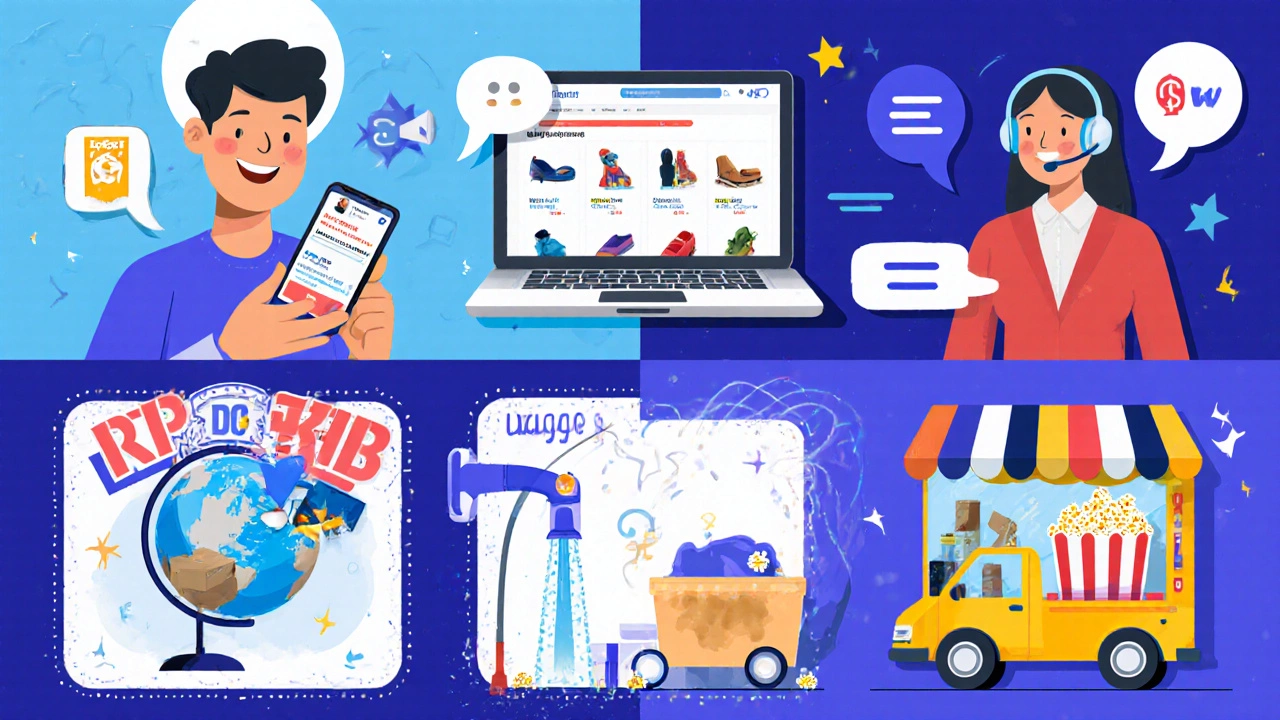Startup Budget Calculator
Choose Your Business Idea
Ever wondered if a handful of cash can turn into a thriving venture? You don’t need a six‑figure bank account to test a market - a well‑planned low budget startup can be launched for as little as five hundred dollars. Below is a practical roadmap that walks you through idea selection, cost‑cutting tactics, legal basics, and a quick‑scan comparison of the best options for 2025.
What qualifies as a $500 startup?
Low‑budget startup is a business launched with minimal capital, typically under $500, focusing on lean operations and rapid validation. In Australia, a micro‑enterprise of this size usually falls under the Home‑based business classification, meaning you can run it from your kitchen or garage without needing expensive commercial rent. The key is to choose an idea that relies on skills you already have, low‑cost supplies, and digital tools that are free or cheap.
10 realistic business ideas you can start for $500 or less
- Online Resale Store: Source clearance‑line items, second‑hand goods, or niche collectibles on Gumtree and eBay. Use a simple Shopify Lite plan ($29/month) and allocate $200 for initial inventory.
- Service‑based Consulting: Offer expertise you already possess - social media management, bookkeeping, or HR advice. Invest $100 in a professional website on Squarespace and the rest in a LinkedIn Premium subscription to attract clients.
- Dropshipping: Partner with suppliers on AliExpress or local Aussie dropship networks. Spend $150 on a domain, $250 on targeted Facebook ads, and let the supplier handle inventory.
- Print‑on‑Demand Merchandise: Create designs on Canva, list them on Redbubble or TeeSpring. Your $500 goes to a modest ad budget and a basic graphic tablet ($120).
- Freelance Writing / Editing: Use platforms like Upwork or Fiverr. A $50 investment in a Grammarly premium subscription and a $100 professional email domain can boost credibility.
- Mobile Car Wash: Buy a portable pressure washer ($250), cleaning solutions ($50), and market through local Facebook groups. No storefront needed.
- Food Cart or Pop‑up Snacks: Purchase a second‑hand cart ($300) and stock with low‑cost items like popcorn or churros. Operate at weekend markets where permits are cheap.
- Pet Sitting / Dog Walking: Print flyers ($30) and list services on PetCircle. Use $70 for a basic liability insurance policy.
- Digital Courses: Package your knowledge into a short video series. Allocate $200 for a decent microphone and $100 for Adobe Premiere Elements.
- Virtual Assistant Services: Offer admin support, calendar management, or email triage. Invest $150 in a professional website and $100 in a reliable VPN for security.
How to keep expenses under control
- Leverage free tools: Google Workspace (free tier), Canva, Mailchimp (up to 2,000 contacts).
- Barter skills: exchange your consulting hours for graphic design or website setup.
- Buy second‑hand equipment from Gumtree, Facebook Marketplace, or local thrift stores.
- Use a shared coworking space for a day a week instead of a permanent office.
- Track every penny with the free version of Wave Accounting - it integrates with the Australian Taxation Office (ATO) for GST reporting.

Legal and tax basics for an Australian micro‑enterprise
Even with $500, you must tick a few legal boxes:
- Business name registration: Register through ASIC. The fee is $37 for a one‑year registration.
- ABN (Australian Business Number): Free through the Australian Business Register. You’ll need it to invoice clients and claim GST credits.
- GST registration: Required only if turnover exceeds $75,000. For a $500 startup you can stay out of GST until you scale.
- Insurance: Public liability insurance for service‑based ideas (around $300 per year) protects you from accidental claims.
- Local permits: For food carts or mobile services, check your NSW government council website. A temporary market stall permit usually costs under $50.
Funding alternatives when $500 isn’t enough
If you hit a cash shortfall, consider these low‑risk options before turning to high‑interest loans:
| Source | Typical Amount | Eligibility | Repayment |
|---|---|---|---|
| Business.gov.au grants | $1,000 - $5,000 | Australian citizen, viable business plan | None (grant) |
| Family or friends | Variable | Personal relationship | Flexible, usually informal |
| Micro‑loan (e.g., Spark Business) | Up to $10,000 | ABN, good credit score | 5‑7% APR, 12‑24 months |
| Crowdfunding (Kickstarter, GoFundMe) | Variable | Compelling story | None, unless you offer rewards |
Grants from Business.gov.au are a top pick for first‑time founders because they don’t require repayment and often include mentorship.
Quick‑launch checklist
- Validate the idea with at least 5 potential customers.
- Register a business name and obtain an ABN.
- Set up a simple website or a storefront on an existing platform.
- Buy only essential tools - prioritize second‑hand.
- Open a separate business bank account (many banks offer free accounts for under $1,000 turnover).
- Track income & expenses from day one using Wave or Excel.
- Apply for any relevant Business.gov.au grants before you spend the last $100.
Decision matrix: Which $500 idea fits you?
| Idea | Skill Required | Time Commitment | Scalability |
|---|---|---|---|
| Online Resale Store | Moderate (product sourcing) | 2‑4 hrs/day | High (expand to multiple platforms) |
| Service‑based Consulting | High (expertise needed) | 1‑3 hrs/day | Medium (add team later) |
| Dropshipping | Low‑moderate (marketing) | 1‑2 hrs/day | Very high (global reach) |
| Mobile Car Wash | Low (physical labor) | 3‑5 hrs/day (seasonal) | Medium (add more trucks) |
| Food Cart | Moderate (cooking) | 4‑6 hrs/day | Medium (multiple carts) |
Match the idea to your personal strengths, local demand, and how quickly you want to see cash flow. Most of these models can generate profit within the first 30‑60 days if you follow the cost‑saving tips above.
Next steps and troubleshooting
If sales stall, revisit the validation stage: interview another five customers, tweak pricing, or test a new marketing channel. Remember, a $500 startup is meant to be agile - you can pivot without the overhead of a big office or inventory.
Can I really launch a business with only $500 in Australia?
Yes. By choosing a low‑overhead model, leveraging free digital tools, and taking advantage of government grants, you can start operating with under $500 and scale as revenue grows.
Do I need to register for GST right away?
No. GST registration is mandatory only when your annual turnover exceeds $75,000. Until then, you can operate GST‑free and still claim input tax credits on eligible purchases.
What are the best free marketing channels for a $500 startup?
Start with organic social media (Instagram, Facebook Marketplace), local community groups, and a simple Google My Business listing. Pair these with a modest $100-$150 ad spend to test audience response.
How can I protect my brand without spending a lot?
Use a trademark search on IP Australia (free) and file a provisional trademark for around $250. Meanwhile, secure a domain name and consistent branding across social platforms.
What if my $500 runs out before I break even?
Tap into short‑term funding sources like micro‑loans, family loans, or a small grant from Business.gov.au. Keep a lean cash‑flow forecast so you know exactly when additional cash is needed.

